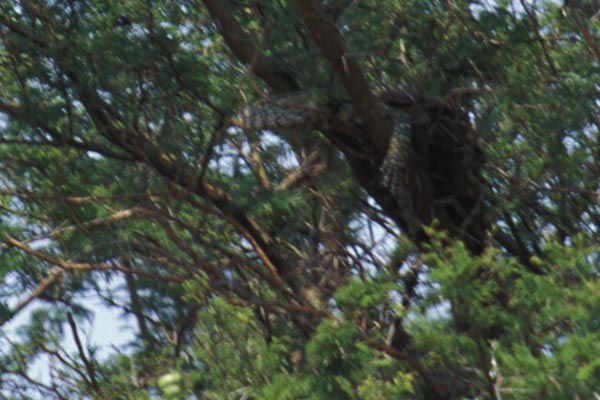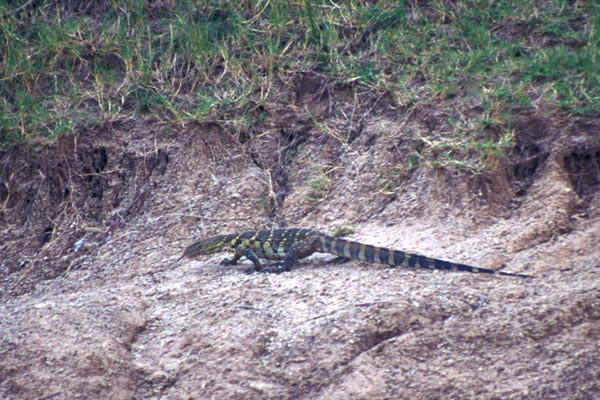
I waffled on identifying this as either Varanus albigularis or Varanus niloticus. Originally I listed it here as more likely to be V. albigularis, but several correspondents have now written to explain why they believe it is V. niloticus. The evidence is fairly overwhelming, so I've reclassified this picture.
Many thanks to the correspondents who took the time to correct my misidentification, including Paul Huang, David Kirshner, Jean-Michel Le Poder, Heather Cullen, Marc Abuys, and one or two others who didn't supply their names.

Paul's list of heavier reptiles includes:
- Nile crocodile
- Narrow-snouted crocodile
- African spur-thighed tortoise
- African rock python
- African dwarf crocodile
This particular Nile Monitor, patrolling the far bank of the Mara river where it passed by our camp, is still a youngster, perhaps only about 4 feet long. They hang out near water most of the time, searching for frogs, toads, crocodile eggs, and other succulent morsels.
- Extract from Daniel Bennett's Little Book of Monitor Lizards.
- Branch, B. 1998. Field Guide to Snakes and Other Reptiles of Southern Africa, third revised edition
- Glaw, F., Vences, M. 1994. A Fieldguide to the Amphibians and Reptiles of Madagascar, Second Edition
- Obst, F. J., Richter, K., Jacob, U. 1988. The Completely Illustrated Atlas of Reptiles and Amphibians for the Terrarium
- Pianka, E. R., King, D. R., King, R. A. 2004. Varanoid Lizards of the World
- Spawls, S. 2017. A Guide to Amphibians and Reptiles of the Maasai Mara
- Spawls, S., Howell, K., Hinkel, H., Menegon, M. 2018. A Field Guide to East African Reptiles, 2nd edition